SI5351B-B I²C Clock Generator: Pinout, Features and Datasheet
2.5V Clock Generator SI5351 Clock Generators MultiSynth™ Series 20-VFQFN Exposed Pad 20 Terminals Surface Mount 1.71V~3.6V Tray









2.5V Clock Generator SI5351 Clock Generators MultiSynth™ Series 20-VFQFN Exposed Pad 20 Terminals Surface Mount 1.71V~3.6V Tray
The SI5351B is an I²C configurable clock generator that is ideally suited for replacing crystals, crystal oscillators, VCXOs, phase-locked loops (PLLs), and fanout buffers in cost-sensitive applications. Furthermore, Huge range of Semiconductors, Capacitors, Resistors and IcS in stock. Welcome RFQ.

Programming si5351 with the PyBoard
Si5351B-B Pinout
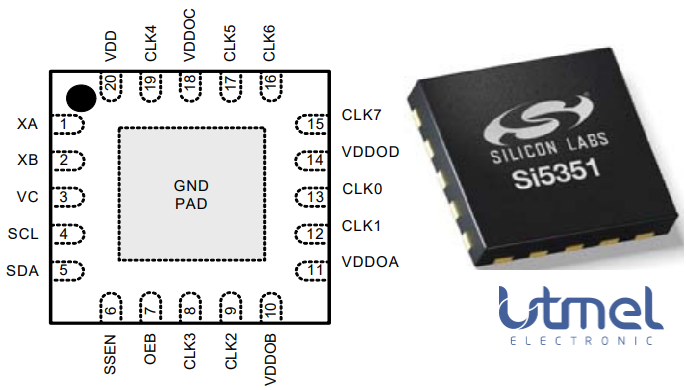
Pinout
Si5351B-B CAD Model
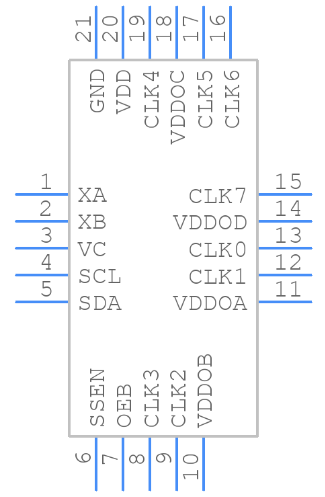
PCB Symbol

PCB Footprint

3D Model
Si5351B-B Overview
The Si5351 is an I2C configurable clock generator that is ideally suited for replacing crystals, crystal oscillators, VCXOs, phase-locked loops (PLLs), and fanout buffers in cost-sensitive applications. Based on a PLL/VCXO + high resolution MultiSynth fractional divider architecture, the Si5351 can generate any frequency up to 200 MHz on each of its outputs with 0 ppm error. Three versions of the Si5351 are available to meet a wide variety of applications. The Si5351A generates up to 8 free-running clocks using an internal oscillator for replacing crystals and crystal oscillators. The Si5351B adds an internal VCXO and provides the flexibility to replace both free-running clocks and synchronous clocks. It eliminates the need for higher cost, custom pullable crystals while providing reliable operation over a wide tuning range. The Si5351C offers the same flexibility but synchronizes to an external reference clock (CLKIN).
This article provides you with a basic overview of the SI5351B-B I²C Clock Generator, including its pin descriptions, features and specifications, etc., to help you quickly understand what SI5351B-B is.
Si5351B-B Features
● Generates up to eight non-integerrelated frequencies from 2.5 kHz to 200 MHz
● I2C user definable configuration
● Exact frequency synthesis at each output (0 ppm error)
● Highly linear VCXO
● Optional clock input (CLKIN)
● Low output period jitter: < 70 ps pp, typ
● Configurable spread spectrum selectable at each output
● Operates from a low-cost, fixed frequency crystal: 25 or 27 MHz
● Supports static phase offset
● Programmable rise/fall time control
● Glitchless frequency changes
● Separate voltage supply pins provide level translation:
● Core VDD: 2.5 or 3.3 V
● Output VDDO: 1.8, 2.5, or 3.3 V
● Excellent PSRR eliminates external power supply filtering
● Very low power consumption
● Adjustable output delay
● Available in three packages types:
◆ 10-MSOP: 3 outputs
◆ 16-QFN (3x3 mm): 4 outputs
◆ 20-QFN (4x4 mm): 8 outputs
● PCIE Gen 1 compatible
● Supports HCSL compatible swing
Specifications
- TypeParameter
- Factory Lead Time6 Weeks
- Package / Case
refers to the protective housing that encases an electronic component, providing mechanical support, electrical connections, and thermal management.
20-VFQFN Exposed Pad - Surface Mount
having leads that are designed to be soldered on the side of a circuit board that the body of the component is mounted on.
YES - Mounting Type
The "Mounting Type" in electronic components refers to the method used to attach or connect a component to a circuit board or other substrate, such as through-hole, surface-mount, or panel mount.
Surface Mount - Number of Pins20
- Packaging
Semiconductor package is a carrier / shell used to contain and cover one or more semiconductor components or integrated circuits. The material of the shell can be metal, plastic, glass or ceramic.
Tray - Series
In electronic components, the "Series" refers to a group of products that share similar characteristics, designs, or functionalities, often produced by the same manufacturer. These components within a series typically have common specifications but may vary in terms of voltage, power, or packaging to meet different application needs. The series name helps identify and differentiate between various product lines within a manufacturer's catalog.
MultiSynth™ - Published2000
- Operating Temperature
The operating temperature is the range of ambient temperature within which a power supply, or any other electrical equipment, operate in. This ranges from a minimum operating temperature, to a peak or maximum operating temperature, outside which, the power supply may fail.
-40°C~85°C - Part Status
Parts can have many statuses as they progress through the configuration, analysis, review, and approval stages.
Active - Moisture Sensitivity Level (MSL)
Moisture Sensitivity Level (MSL) is a standardized rating that indicates the susceptibility of electronic components, particularly semiconductors, to moisture-induced damage during storage and the soldering process, defining the allowable exposure time to ambient conditions before they require special handling or baking to prevent failures
2 (1 Year) - Number of Terminations20
- ECCN Code
An ECCN (Export Control Classification Number) is an alphanumeric code used by the U.S. Bureau of Industry and Security to identify and categorize electronic components and other dual-use items that may require an export license based on their technical characteristics and potential for military use.
EAR99 - TypeClock Generator
- Additional Feature
Any Feature, including a modified Existing Feature, that is not an Existing Feature.
ALSO OPERATES AT 3.3 V SUPPLY - Voltage - Supply
Voltage - Supply refers to the range of voltage levels that an electronic component or circuit is designed to operate with. It indicates the minimum and maximum supply voltage that can be applied for the device to function properly. Providing supply voltages outside this range can lead to malfunction, damage, or reduced performance. This parameter is critical for ensuring compatibility between different components in a circuit.
1.71V~3.6V - Terminal Position
In electronic components, the term "Terminal Position" refers to the physical location of the connection points on the component where external electrical connections can be made. These connection points, known as terminals, are typically used to attach wires, leads, or other components to the main body of the electronic component. The terminal position is important for ensuring proper connectivity and functionality of the component within a circuit. It is often specified in technical datasheets or component specifications to help designers and engineers understand how to properly integrate the component into their circuit designs.
QUAD - Terminal Form
Occurring at or forming the end of a series, succession, or the like; closing; concluding.
NO LEAD - Supply Voltage
Supply voltage refers to the electrical potential difference provided to an electronic component or circuit. It is crucial for the proper operation of devices, as it powers their functions and determines performance characteristics. The supply voltage must be within specified limits to ensure reliability and prevent damage to components. Different electronic devices have specific supply voltage requirements, which can vary widely depending on their design and intended application.
2.5V - Terminal Pitch
The center distance from one pole to the next.
0.5mm - Frequency
In electronic components, the parameter "Frequency" refers to the rate at which a signal oscillates or cycles within a given period of time. It is typically measured in Hertz (Hz) and represents how many times a signal completes a full cycle in one second. Frequency is a crucial aspect in electronic components as it determines the behavior and performance of various devices such as oscillators, filters, and communication systems. Understanding the frequency characteristics of components is essential for designing and analyzing electronic circuits to ensure proper functionality and compatibility with other components in a system.
200MHz - Base Part Number
The "Base Part Number" (BPN) in electronic components serves a similar purpose to the "Base Product Number." It refers to the primary identifier for a component that captures the essential characteristics shared by a group of similar components. The BPN provides a fundamental way to reference a family or series of components without specifying all the variations and specific details.
SI5351 - Output
In electronic components, the parameter "Output" typically refers to the signal or data that is produced by the component and sent to another part of the circuit or system. The output can be in the form of voltage, current, frequency, or any other measurable quantity depending on the specific component. The output of a component is often crucial in determining its functionality and how it interacts with other components in the circuit. Understanding the output characteristics of electronic components is essential for designing and troubleshooting electronic circuits effectively.
LVCMOS - Number of Outputs8
- Operating Supply Voltage
The voltage level by which an electrical system is designated and to which certain operating characteristics of the system are related.
3.6V - Number of Circuits2
- Operating Supply Current
Operating Supply Current, also known as supply current or quiescent current, is a crucial parameter in electronic components that indicates the amount of current required for the device to operate under normal conditions. It represents the current drawn by the component from the power supply while it is functioning. This parameter is important for determining the power consumption of the component and is typically specified in datasheets to help designers calculate the overall power requirements of their circuits. Understanding the operating supply current is essential for ensuring proper functionality and efficiency of electronic systems.
45mA - Input
In electronic components, "Input" refers to the signal or data that is provided to a device or system for processing or manipulation. It is the information or command that is received by the component to initiate a specific function or operation. The input can come from various sources such as sensors, other electronic devices, or user interactions. It is crucial for the proper functioning of the component as it determines how the device will respond or behave based on the input received. Understanding and managing the input parameters is essential in designing and using electronic components effectively.
Crystal - Ratio - Input:Output
The parameter "Ratio - Input:Output" in electronic components refers to the relationship between the input and output quantities of a device or system. It is a measure of how the input signal or energy is transformed or converted into the output signal or energy. This ratio is often expressed as a numerical value or percentage, indicating the efficiency or effectiveness of the component in converting the input to the desired output. A higher ratio typically signifies better performance or higher efficiency, while a lower ratio may indicate losses or inefficiencies in the conversion process. Understanding and optimizing the input-output ratio is crucial in designing and evaluating electronic components for various applications.
1:8 - Primary Clock/Crystal Frequency-Nom
The parameter "Primary Clock/Crystal Frequency-Nom" refers to the nominal frequency at which a clock or crystal oscillator operates in electronic components. This frequency is critical for synchronizing the timing of various processes within a circuit or system. It is typically specified in hertz and indicates the standard or average frequency that the oscillator is designed to achieve under normal operating conditions. Accurate frequency is essential for ensuring proper functioning and performance of digital circuits and communication systems.
27MHz - PLL
PLL stands for Phase-Locked Loop, which is a control system that generates an output signal whose phase is related to the phase of an input signal. It is commonly used in electronic components to synchronize, modulate, demodulate, filter, or recover a signal's frequency. A PLL typically consists of a phase detector, a loop filter, a voltage-controlled oscillator (VCO), and a feedback circuit. The PLL locks the phase of the output signal to the phase of the input signal, making it a versatile tool in various applications such as frequency synthesis, clock recovery, and frequency modulation.
Yes - Differential - Input:Output
Differential - Input:Output refers to the relationship between the input and output signals in differential amplifiers or circuits. It measures the difference in voltage between two input terminals and produces an output that is proportional to this difference. This parameter is essential for noise rejection and improving signal integrity in various applications, such as operational amplifiers and data acquisition systems. It allows circuits to effectively amplify small signals while minimizing interference and common-mode noise.
No/No - Max Duty Cycle
Max Duty Cycle refers to the maximum percentage of time that an electronic component, such as a switch or a power supply, can be in an "on" state during a defined time period. It is an important parameter in pulse-width modulated (PWM) systems and helps determine how often a device can operate without overheating or sustaining damage. By specifying the maximum duty cycle, manufacturers provide guidance on the safe operational limits of the component, ensuring reliability and efficiency in various applications.
55 % - Divider/Multiplier
The parameter "Divider/Multiplier" in electronic components refers to a feature that allows the component to divide or multiply an input signal by a certain factor. This feature is commonly found in components such as operational amplifiers, voltage regulators, and signal processing circuits. In the context of operational amplifiers, the Divider/Multiplier parameter indicates the ability of the amplifier to scale the input signal by a specific factor, either dividing it or multiplying it. This can be useful for adjusting the amplitude or gain of a signal in a circuit.Overall, the Divider/Multiplier parameter provides flexibility in signal processing applications by allowing users to manipulate the input signal according to their specific requirements, whether it involves scaling down the signal for further processing or amplifying it for increased output.
Yes/No - Height Seated (Max)
Height Seated (Max) is a parameter in electronic components that refers to the maximum allowable height of the component when it is properly seated or installed on a circuit board or within an enclosure. This specification is crucial for ensuring proper fit and alignment within the overall system design. Exceeding the maximum seated height can lead to mechanical interference, electrical shorts, or other issues that may impact the performance and reliability of the electronic device. Manufacturers provide this information to help designers and engineers select components that will fit within the designated space and function correctly in the intended application.
0.9mm - Width4mm
- Length4mm
- RoHS Status
RoHS means “Restriction of Certain Hazardous Substances” in the “Hazardous Substances Directive” in electrical and electronic equipment.
RoHS Compliant - Lead Free
Lead Free is a term used to describe electronic components that do not contain lead as part of their composition. Lead is a toxic material that can have harmful effects on human health and the environment, so the electronics industry has been moving towards lead-free components to reduce these risks. Lead-free components are typically made using alternative materials such as silver, copper, and tin. Manufacturers must comply with regulations such as the Restriction of Hazardous Substances (RoHS) directive to ensure that their products are lead-free and environmentally friendly.
Lead Free
Si5351B-B Functional Block Diagram
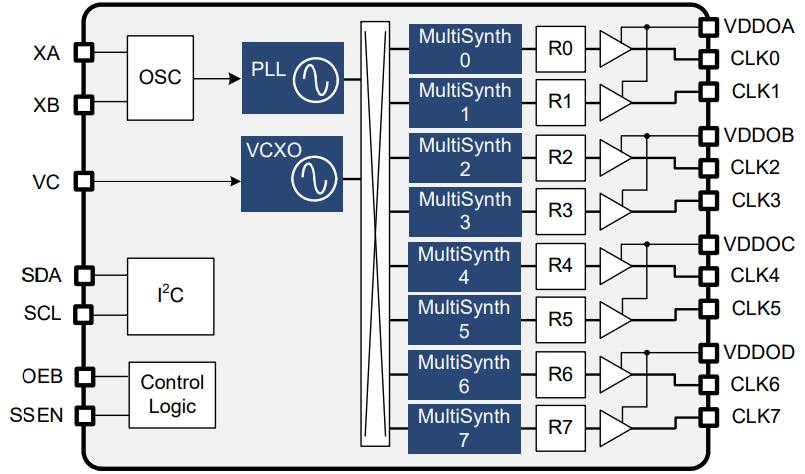
Si5351B (20-QFN) Functional Block Diagram

Si5351 Block Diagram
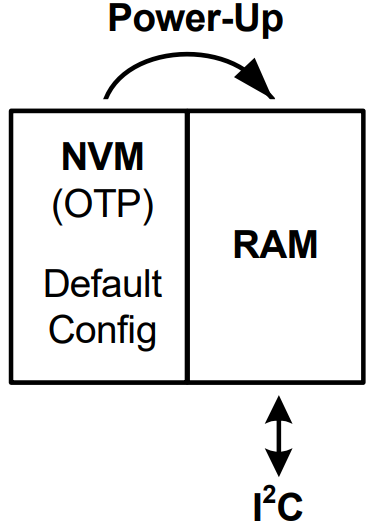
Si5351 Memory Configuration
Si5351B-B Equivalent
| Model number | Manufacturer | Description |
| SI5351B-B-GMR | Silicon Laboratories Inc | Processor Specific Clock Generator, 160MHz, CMOS, 4 X 4 MM, MO-220VGGD-8, QFN-20 |
| SI5351B-A-GM | Silicon Laboratories Inc | 133 MHz, PROC SPECIFIC CLOCK GENERATOR, QCC20, 4 X 4 MM, MO-220VGGD-8, QFN-20 |
| SI5351A-B-GM | Silicon Laboratories Inc | Processor Specific Clock Generator, 160MHz, CMOS, 4 X 4 MM, MO-220VGGD-8, QFN-20 |
| SI5351A-B-GMR | Silicon Laboratories Inc | Processor Specific Clock Generator, 160MHz, CMOS, 4 X 4 MM, MO-220VGGD-8, QFN-20 |
| SI5351A-A-GM | Silicon Laboratories Inc | 133MHz, PROC SPECIFIC CLOCK GENERATOR, QCC20, 4 X 4 MM, MO-220VGGD-8, QFN-20 |
Parts with Similar Specs
- ImagePart NumberManufacturerPackage / CaseNumber of PinsPLLInputNumber of OutputsSupply VoltageTerminal PitchOperating TemperatureView Compare
SI5351B-B-GM
20-VFQFN Exposed Pad
20
Yes
Crystal
8
2.5 V
0.5 mm
-40°C ~ 85°C
20-VFQFN Exposed Pad
20
Yes
Clock, Crystal
8
2.5 V
0.5 mm
-40°C ~ 85°C
20-VFQFN Exposed Pad
20
Yes
Crystal
8
2.5 V
0.5 mm
-40°C ~ 85°C
20-WFQFN Exposed Pad
20
Yes
LVCMOS, LVTTL, Crystal
3
3.3 V
0.5 mm
-40°C ~ 85°C
Si5351B-B Applications
● Audio/video equipment, gaming
● Printers, scanners, projectors
● Handheld Instrumentation
● Laser range finder
● Residential gateways
● Networking/communication
● Servers, storage
● XO replacement
Si5351B-B Package
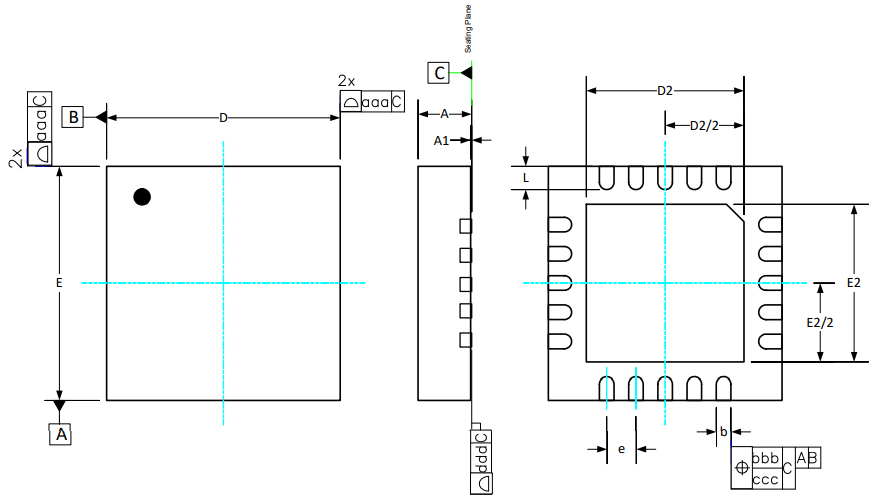
20-pin QFN Package Outline
Si5351B-B Land Pattern

20-Pin QFN Land Pattern
Si5351B-B Top Marking
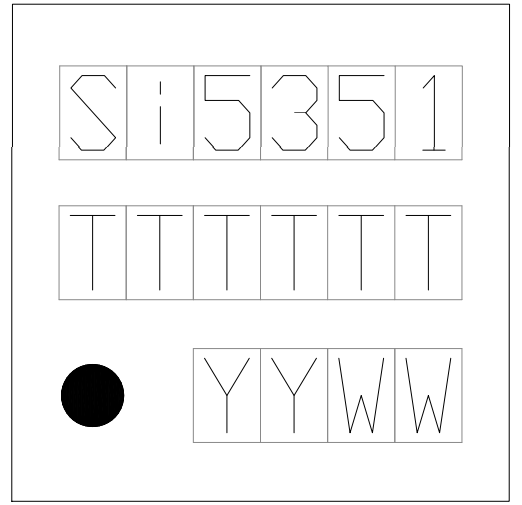
20-Pin QFN Top Marking
Si5351B-B Manufacturer
Silicon Labs (NASDAQ: SLAB) is a leading provider of silicon, software and system solutions for the Internet of Things, Internet infrastructure, industrial control, consumer and automotive markets. Resolving the electronics industry's toughest problems, providing customers with significant advantages in performance, energy savings, connectivity, and design simplicity. Backed by world-class engineering teams with unsurpassed software and mixed-signal design expertise, Silicon Labs empowers developers with the tools and technologies they need to advance quickly and easily from initial idea to final product.
Trend Analysis
Datasheet PDF
- Datasheets :
- PCN Packaging :
- PCN Design/Specification :
- PCN Assembly/Origin :
What is the essential property of the Si5351?
The Si5351 is a versatile I2C programmable clock generator that is ideally suited for replacing crystals, crystal oscillators, VCXOs, PLLs, and buffers. The device consists of an input stage, two synthesis stages, and an output stage.
What are the advantages of Si5351's high resolution and flexible synthesis architecture?
Because of this high resolution and flexible synthesis architecture, the Si5351 is capable of generating synchronous or free-running non-integer related clock frequencies at each of its outputs, enabling one device to synthesize clocks for multiple clock domains in a design.
Compared with Si5351A and Si5351C, what are the unique characteristics of Si5351B?
A unique feature of the Si5351B is its ability to generate multiple output frequencies controlled by the same control voltage applied to the VC pin. This replaces multiple PLLs or VCXOs that would normally be locked to the same reference.
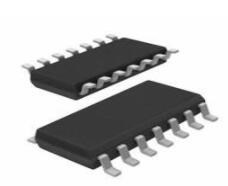 TJA1043 High-speed Can Transceiver: Datasheet, Application Hints, Test Circuit
TJA1043 High-speed Can Transceiver: Datasheet, Application Hints, Test Circuit01 December 20216074
 Microchip PIC16LF1516ISP: A Comprehensive Overview of Features and Applications
Microchip PIC16LF1516ISP: A Comprehensive Overview of Features and Applications29 February 2024205
 What’s the relationship between CR2032 and CR2016?
What’s the relationship between CR2032 and CR2016?16 June 202211107
 ATTINY13 8-bit AVR Microcontroller: Pinout, Equivalent and Datasheet
ATTINY13 8-bit AVR Microcontroller: Pinout, Equivalent and Datasheet16 December 20213448
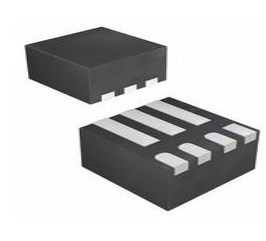 TLV62085RLTR:7-VFDFN, Pinout, Datasheet, Step-Down
TLV62085RLTR:7-VFDFN, Pinout, Datasheet, Step-Down11 February 2022834
 AMG8833 Infrared Array Sensor: Pinout, Datasheet and Applications
AMG8833 Infrared Array Sensor: Pinout, Datasheet and Applications31 July 20214527
 TE Connectivity 1-968855-1 Terminal: Complete Automotive Wiring Guide
TE Connectivity 1-968855-1 Terminal: Complete Automotive Wiring Guide28 August 202591
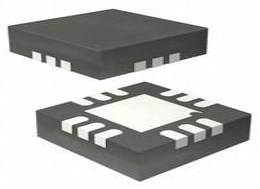 ADG1204 Multiplexer: Pinout, Features and Datasheet
ADG1204 Multiplexer: Pinout, Features and Datasheet14 February 20221018
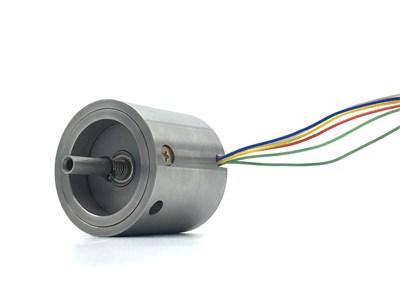 RVDT(Rotary Variable Differential Transformer) Basics
RVDT(Rotary Variable Differential Transformer) Basics02 February 202116863
 Chip Filters, Piezoelectric Materials and the Piezoelectric Effect
Chip Filters, Piezoelectric Materials and the Piezoelectric Effect27 September 20224831
 What is Mini LED?
What is Mini LED?08 December 20204140
 An Overview of Common Mode Chokes
An Overview of Common Mode Chokes10 August 202012957
 H-bridge: Working, Circuits and Applications
H-bridge: Working, Circuits and Applications03 December 202141606
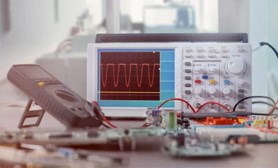 EMC can also observe the waveform with an oscilloscope?
EMC can also observe the waveform with an oscilloscope?04 March 20224097
 How much do you know about VR Technology?
How much do you know about VR Technology?01 September 20212143
 A User Guide to Automotive Relay
A User Guide to Automotive Relay30 July 20215390
Silicon Labs
In Stock
United States
China
Canada
Japan
Russia
Germany
United Kingdom
Singapore
Italy
Hong Kong(China)
Taiwan(China)
France
Korea
Mexico
Netherlands
Malaysia
Austria
Spain
Switzerland
Poland
Thailand
Vietnam
India
United Arab Emirates
Afghanistan
Åland Islands
Albania
Algeria
American Samoa
Andorra
Angola
Anguilla
Antigua & Barbuda
Argentina
Armenia
Aruba
Australia
Azerbaijan
Bahamas
Bahrain
Bangladesh
Barbados
Belarus
Belgium
Belize
Benin
Bermuda
Bhutan
Bolivia
Bonaire, Sint Eustatius and Saba
Bosnia & Herzegovina
Botswana
Brazil
British Indian Ocean Territory
British Virgin Islands
Brunei
Bulgaria
Burkina Faso
Burundi
Cabo Verde
Cambodia
Cameroon
Cayman Islands
Central African Republic
Chad
Chile
Christmas Island
Cocos (Keeling) Islands
Colombia
Comoros
Congo
Congo (DRC)
Cook Islands
Costa Rica
Côte d’Ivoire
Croatia
Cuba
Curaçao
Cyprus
Czechia
Denmark
Djibouti
Dominica
Dominican Republic
Ecuador
Egypt
El Salvador
Equatorial Guinea
Eritrea
Estonia
Eswatini
Ethiopia
Falkland Islands
Faroe Islands
Fiji
Finland
French Guiana
French Polynesia
Gabon
Gambia
Georgia
Ghana
Gibraltar
Greece
Greenland
Grenada
Guadeloupe
Guam
Guatemala
Guernsey
Guinea
Guinea-Bissau
Guyana
Haiti
Honduras
Hungary
Iceland
Indonesia
Iran
Iraq
Ireland
Isle of Man
Israel
Jamaica
Jersey
Jordan
Kazakhstan
Kenya
Kiribati
Kosovo
Kuwait
Kyrgyzstan
Laos
Latvia
Lebanon
Lesotho
Liberia
Libya
Liechtenstein
Lithuania
Luxembourg
Macao(China)
Madagascar
Malawi
Maldives
Mali
Malta
Marshall Islands
Martinique
Mauritania
Mauritius
Mayotte
Micronesia
Moldova
Monaco
Mongolia
Montenegro
Montserrat
Morocco
Mozambique
Myanmar
Namibia
Nauru
Nepal
New Caledonia
New Zealand
Nicaragua
Niger
Nigeria
Niue
Norfolk Island
North Korea
North Macedonia
Northern Mariana Islands
Norway
Oman
Pakistan
Palau
Palestinian Authority
Panama
Papua New Guinea
Paraguay
Peru
Philippines
Pitcairn Islands
Portugal
Puerto Rico
Qatar
Réunion
Romania
Rwanda
Samoa
San Marino
São Tomé & Príncipe
Saudi Arabia
Senegal
Serbia
Seychelles
Sierra Leone
Sint Maarten
Slovakia
Slovenia
Solomon Islands
Somalia
South Africa
South Sudan
Sri Lanka
St Helena, Ascension, Tristan da Cunha
St. Barthélemy
St. Kitts & Nevis
St. Lucia
St. Martin
St. Pierre & Miquelon
St. Vincent & Grenadines
Sudan
Suriname
Svalbard & Jan Mayen
Sweden
Syria
Tajikistan
Tanzania
Timor-Leste
Togo
Tokelau
Tonga
Trinidad & Tobago
Tunisia
Turkey
Turkmenistan
Turks & Caicos Islands
Tuvalu
U.S. Outlying Islands
U.S. Virgin Islands
Uganda
Ukraine
Uruguay
Uzbekistan
Vanuatu
Vatican City
Venezuela
Wallis & Futuna
Yemen
Zambia
Zimbabwe

